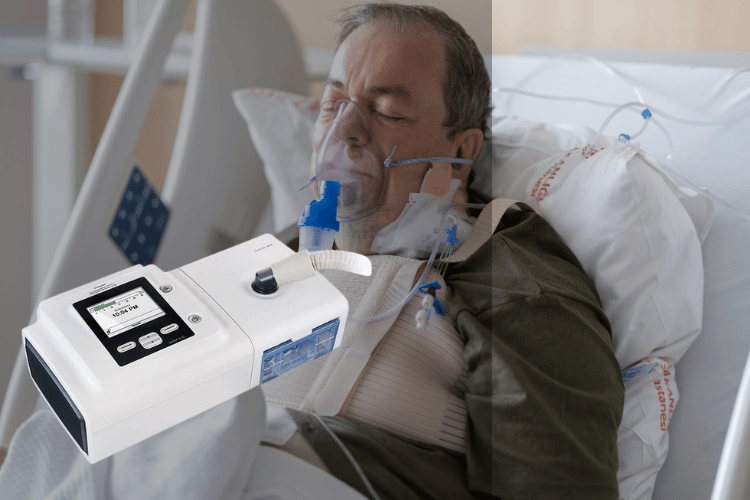
Understanding CPAP and BiPAP Machines
Continuous Positive Airway Pressure (CPAP) and Bilevel Positive Airway Pressure (BiPAP) machines are essential medical devices designed to assist individuals with sleep apnea and other respiratory conditions. These machines ensure a steady flow of air to keep airways open during sleep, improving breathing and overall health. While both devices serve similar purposes, they differ in functionality and application, making it crucial to understand their unique features and benefits.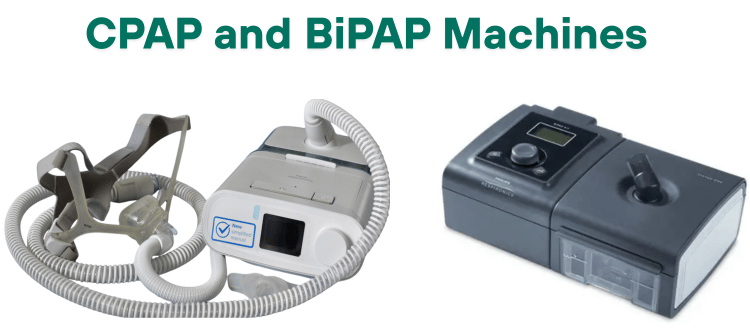
CPAP and BiPAP Machines
What is a CPAP Machine?
A CPAP machine is a device primarily used to treat obstructive sleep apnea (OSA). It delivers a constant, steady stream of air pressure through a mask worn over the nose or mouth, preventing the airway from collapsing during sleep. This consistent airflow helps maintain uninterrupted breathing, reducing snoring and improving sleep quality. CPAP machines are often prescribed for individuals with mild to severe sleep apnea. They are relatively simple to use, with adjustable pressure settings tailored to the user's needs. Modern CPAP devices also come equipped with features like humidifiers to prevent dryness and heated tubing for added comfort. Despite their effectiveness, some users may find the constant pressure uncomfortable, especially during exhalation.What is a BiPAP Machine?
A BiPAP machine, on the other hand, is a more advanced device that provides two levels of air pressure: a higher pressure during inhalation (inspiratory positive airway pressure or IPAP) and a lower pressure during exhalation (expiratory positive airway pressure or EPAP). This dual-pressure system makes it easier for users to breathe out, offering a more natural breathing experience compared to CPAP machines. BiPAP machines are often recommended for individuals who struggle with CPAP therapy or have more complex respiratory conditions, such as central sleep apnea, chronic obstructive pulmonary disease (COPD), or other neuromuscular disorders. The flexibility of pressure settings makes BiPAP devices suitable for patients who require higher levels of respiratory support.How CPAP and BiPAP Machines Work?
Both CPAP and BiPAP machines function by delivering pressurized air through a mask, but their mechanisms differ slightly:- CPAP Machines: These devices maintain a single, continuous level of air pressure throughout the breathing cycle. The consistent airflow prevents airway obstruction, ensuring the user can breathe without interruptions. CPAP machines are straightforward and effective for most cases of obstructive sleep apnea.
- BiPAP Machines: Unlike CPAP machines, BiPAP devices alternate between two pressure levels. The higher pressure during inhalation supports the user's effort to breathe in, while the lower pressure during exhalation reduces the effort required to breathe out. This dual-pressure system is particularly beneficial for individuals with conditions that make exhalation challenging.
Key Differences Between CPAP and BiPAP
Continuous Positive Airway Pressure (CPAP) and Bilevel Positive Airway Pressure (BiPAP) machines are both designed to assist individuals with breathing difficulties, particularly during sleep. However, they differ significantly in their functionality, applications, and benefits. Understanding these distinctions can help users and healthcare providers make informed decisions about which device is most suitable for specific conditions.Pressure Settings: CPAP vs BiPAP
One of the most notable differences between CPAP and BiPAP machines lies in their pressure delivery systems. CPAP devices provide a single, continuous level of air pressure throughout the entire breathing cycle. This steady airflow is effective in keeping the airway open, particularly for individuals with obstructive sleep apnea. However, the constant pressure can sometimes feel uncomfortable, especially during exhalation, as users must breathe out against the same level of pressure. In contrast, BiPAP machines offer two distinct pressure levels: a higher pressure during inhalation (IPAP) and a lower pressure during exhalation (EPAP). This dual-pressure system mimics the natural breathing process more closely, making it easier for users to exhale. The flexibility of BiPAP settings is particularly beneficial for individuals who require higher levels of respiratory support or have conditions that make exhalation challenging, such as chronic obstructive pulmonary disease (COPD) or central sleep apnea.Indications for Use: When to Choose BiPAP
While CPAP machines are often the first-line treatment for obstructive sleep apnea, there are specific scenarios where a BiPAP machine may be a better option. BiPAP devices are typically recommended for individuals who:- Struggle to tolerate the constant pressure of a CPAP machine.
- Have more complex respiratory conditions, such as central sleep apnea, which involves the brain failing to send proper signals to the muscles that control breathing.
- Suffer from chronic respiratory disorders like COPD, where exhaling against a single pressure level can be particularly difficult.
- Require higher pressure settings that may be uncomfortable to maintain with a CPAP device.
Benefits of Using BiPAP Over CPAP
BiPAP machines offer several advantages over CPAP devices, particularly for individuals with specific medical needs or those who find CPAP therapy uncomfortable. Some of the key benefits include:- Enhanced Comfort: The dual-pressure system of BiPAP machines reduces the effort required to exhale, making the therapy more comfortable for users, especially those with higher pressure requirements.
- Versatility: BiPAP devices are suitable for a wider range of conditions, including central sleep apnea, COPD, and other neuromuscular disorders. This versatility makes them a preferred choice for individuals with complex respiratory needs.
- Improved Adherence: The comfort and flexibility offered by BiPAP machines often lead to better compliance with therapy, ensuring users receive the full benefits of treatment.
- Advanced Features: Many BiPAP machines come equipped with additional features, such as adjustable pressure settings, data tracking, and ramp functions that gradually increase pressure to help users fall asleep more easily.
Understanding the Benefits of BiPAP Machines
Bilevel Positive Airway Pressure (BiPAP) machines are advanced respiratory devices designed to provide tailored support for individuals with various breathing challenges. Unlike standard CPAP devices, BiPAP machines offer unique features that enhance comfort, adaptability, and overall effectiveness, making them a preferred choice for many patients.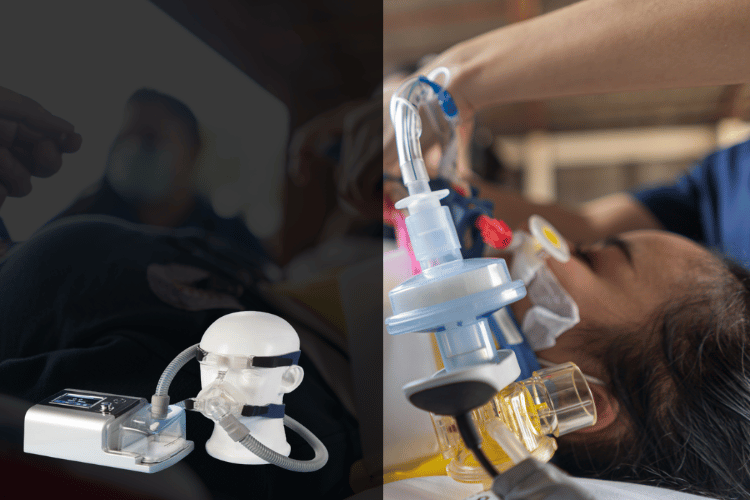
Benefits of BiPAP Machines
Improved Breathing Comfort
One of the standout advantages of BiPAP machines is their ability to deliver two distinct pressure levels: a higher pressure during inhalation (IPAP) and a lower pressure during exhalation (EPAP). This dual-pressure system closely mimics the natural breathing process, significantly reducing the effort required to exhale. For individuals with conditions like chronic obstructive pulmonary disease (COPD) or central sleep apnea, this feature can make a world of difference in comfort and usability. The reduced exhalation resistance not only alleviates discomfort but also helps users maintain a more natural breathing rhythm throughout the night. This is particularly beneficial for patients who require higher pressure settings, as the lower exhalation pressure prevents feelings of suffocation or air pressure overload. By prioritizing user comfort, BiPAP machines encourage consistent use, which is critical for effective therapy.Versatility in Treatment
BiPAP machines are highly versatile and can address a wide range of respiratory conditions beyond obstructive sleep apnea. They are often prescribed for individuals with more complex medical needs, such as:- Central Sleep Apnea: Where the brain fails to send proper signals to the muscles controlling breathing.
- Chronic Obstructive Pulmonary Disease (COPD): A condition that makes it difficult to exhale fully against a single pressure level.
- Neuromuscular Disorders: Such as amyotrophic lateral sclerosis (ALS) or muscular dystrophy, which impair the muscles involved in breathing.
- Hypoventilation Syndromes: Where shallow breathing leads to insufficient oxygen intake and carbon dioxide removal.
Patient Compliance and Satisfaction
The comfort and flexibility provided by BiPAP machines play a significant role in improving patient compliance with therapy. Many individuals find it challenging to adhere to CPAP treatment due to the constant pressure, which can feel restrictive or uncomfortable over time. BiPAP devices, with their dual-pressure system, offer a more user-friendly experience, encouraging long-term use. Moreover, the ability to customize pressure settings to suit individual needs ensures that patients receive optimal support without unnecessary discomfort. Features like ramp settings, which gradually increase pressure as the user falls asleep, and quiet operation further enhance the overall experience, making therapy less intrusive and more manageable. By addressing common barriers to compliance, such as discomfort and inflexibility, BiPAP machines not only improve treatment outcomes but also boost patient satisfaction. This combination of effectiveness and ease of use makes them an invaluable tool in managing complex respiratory conditions.How to Use a BiPAP Machine?
Using a BiPAP machine effectively requires proper setup, regular adjustments, and consistent maintenance. These steps ensure that the device functions optimally, providing the necessary respiratory support while maintaining user comfort. Whether you're new to BiPAP therapy or looking to improve your experience, understanding these aspects is essential.Setting Up Your BiPAP Machine
The first step in using a BiPAP machine is setting it up correctly. Start by placing the device on a stable, flat surface near your bed. Ensure the area is clean and free from dust to prevent particles from entering the machine. Connect the tubing securely to the device and attach the other end to the mask. Most BiPAP machines come with a user-friendly interface, making it easy to follow setup instructions. Next, position the mask over your nose, mouth, or both, depending on the type prescribed by your healthcare provider. Adjust the straps to create a snug but comfortable fit, ensuring there are no air leaks. Leaks can reduce the effectiveness of the therapy and cause discomfort. If your machine includes a humidifier, fill it with distilled water to prevent dryness and irritation during use. Finally, plug in the device and turn it on. Many BiPAP machines feature a ramp function that gradually increases air pressure, allowing you to fall asleep more comfortably. Take a few minutes to get accustomed to the airflow before lying down to sleep.Adjusting Settings for Optimal Use
BiPAP machines are designed to be highly customizable, allowing users to adjust settings for maximum comfort and effectiveness. The two primary settings to consider are inspiratory positive airway pressure (IPAP) and expiratory positive airway pressure (EPAP). These settings are typically pre-programmed by your healthcare provider based on your specific needs, but some devices allow for minor adjustments. If you find the pressure too high or too low, consult your provider before making changes. Adjusting the ramp feature can also help, as it gradually increases pressure over a set period, making it easier to fall asleep. Additionally, many BiPAP machines include advanced features like heated tubing and mask fit checks, which can enhance your overall experience. Monitoring your therapy data is another crucial aspect of optimizing your BiPAP use. Many devices come with built-in data tracking, allowing you and your healthcare provider to review your progress and make necessary adjustments. This ensures that the therapy remains effective over time.Maintenance and Care of BiPAP Machines
Proper maintenance is vital to ensure the longevity and performance of your BiPAP machine. Start by cleaning the mask, tubing, and humidifier chamber regularly. Use mild soap and warm water to wash these components, and allow them to air dry completely before reassembling. Avoid using harsh chemicals, as they can damage the materials. Replace disposable filters as recommended by the manufacturer, and clean reusable filters weekly to prevent dust and allergens from accumulating. Wipe down the exterior of the machine with a damp cloth to keep it free from dust. If your device includes a humidifier, empty and refill the chamber daily with distilled water to prevent mineral buildup and bacterial growth. Regularly inspect the tubing and mask for signs of wear and tear, such as cracks or leaks. Replace these components as needed to maintain the effectiveness of your therapy. Additionally, schedule periodic check-ups with your healthcare provider to ensure the device is functioning correctly and meeting your needs. By following these steps, you can maximize the benefits of your BiPAP machine while ensuring it remains in excellent condition for years to come.Finding BiPAP Machines for Sale
When searching for a BiPAP machine, it’s essential to consider where to buy, how to compare options, and whether insurance can help cover the cost. With a variety of models and features available, understanding these factors can help you make an informed decision and find the right device for your needs.Where to Purchase BiPAP Machines
BiPAP machines are available through several channels, each offering unique advantages. One of the most reliable options is purchasing through a medical equipment supplier. These suppliers often work directly with healthcare providers to ensure you receive a device that meets your specific medical requirements. Additionally, they may offer setup assistance and ongoing support. Online retailers are another popular option, providing a wide selection of BiPAP machines at competitive prices. Websites specializing in medical equipment often feature detailed product descriptions, customer reviews, and comparison tools to help you make an informed choice. However, it’s crucial to verify the retailer’s credibility and ensure the device comes with a warranty. Some individuals may also choose to buy secondhand BiPAP machines from private sellers or online marketplaces. While this can be a cost-effective option, it’s important to exercise caution. Always check the device’s condition, request maintenance records, and ensure it has been properly sanitized before use.Comparing Prices and Brands
The cost of a BiPAP machine can vary significantly depending on the brand, features, and included accessories. To find the best value, start by comparing models from reputable manufacturers such as ResMed, Philips Respironics, and Fisher & Paykel. These brands are known for their quality, durability, and advanced features. When comparing prices, consider the following factors:- Features: Machines with advanced options like heated tubing, data tracking, and customizable pressure settings may cost more but offer greater comfort and functionality.
- Accessories: Some devices include essential accessories like masks, tubing, and filters, while others require these items to be purchased separately.
- Warranty: A longer warranty period can provide peace of mind and protect your investment.
Insurance Coverage for BiPAP Machines
Many health insurance plans cover the cost of BiPAP machines, either partially or fully, as they are considered medically necessary devices. To determine your coverage, start by consulting your insurance provider and reviewing your policy. You may need a prescription and documentation from your healthcare provider outlining the medical necessity of the device. Insurance coverage often includes the machine itself, as well as essential accessories like masks and tubing. However, some plans may require you to meet a deductible or pay a co-payment. Additionally, certain policies may only cover specific brands or models, so it’s important to confirm these details before making a purchase. If your insurance plan does not cover the full cost, consider exploring financing options offered by medical equipment suppliers or online retailers. Many providers offer payment plans that allow you to spread the cost over several months, making the device more affordable. By understanding where to buy, how to compare options, and leveraging insurance benefits, you can find a BiPAP machine that meets your needs without exceeding your budget.Frequently Asked Questions
Q: What is a BiPAP machine and how does it work?
A: A BiPAP machine, or bilevel positive airway pressure device, is a medical device designed to assist individuals with breathing difficulties, particularly those with sleep apnea. It delivers pressurized air through a face mask, offering two distinct pressure levels: a higher pressure during inhalation (IPAP) and a lower pressure during exhalation (EPAP). This dual-pressure system makes breathing more natural and comfortable, especially during sleep, while improving oxygen levels and reducing symptoms of sleep apnea.
Q: How does BiPAP therapy differ from CPAP therapy?
A: BiPAP therapy differs from CPAP therapy in how air pressure is delivered. CPAP machines provide a single, continuous air pressure throughout the breathing cycle, while BiPAP machines alternate between two pressure levels—higher for inhalation and lower for exhalation. This makes BiPAP therapy a more comfortable and personalized option for individuals who find CPAP therapy difficult to tolerate or have more complex respiratory needs.
Q: Who can benefit from using a BiPAP machine?
A: BiPAP machines are ideal for individuals with obstructive sleep apnea, central sleep apnea, or those who struggle with CPAP therapy. They are also beneficial for patients with chronic respiratory conditions like COPD or neuromuscular disorders, as the dual-pressure system helps improve breathing efficiency and comfort during sleep.
Q: What types of masks are available for BiPAP users?
A: BiPAP users can choose from several types of masks, including nasal masks, full-face masks, and nasal pillows. The best mask depends on factors like comfort, breathing habits, and personal preferences. A sleep specialist can help recommend the most suitable option based on your needs and the machine's settings.
Q: How do I adjust the settings on my BiPAP machine?
A: BiPAP machine settings, such as IPAP and EPAP levels, can be adjusted through the device's interface. However, it’s crucial to consult your healthcare provider or sleep specialist before making any changes. Adjustments should align with your sleep study results and treatment plan to ensure effective therapy.
Q: Can BiPAP treatment help with central sleep apnea?
A: Yes, BiPAP therapy can be effective for managing central sleep apnea. The machine’s ability to deliver varying air pressure levels helps stabilize breathing patterns and improve oxygen levels during sleep. It’s important to work closely with your healthcare provider to determine the most appropriate treatment for your condition.
Q: Are BiPAP machines louder than CPAP machines?
A: BiPAP machines may produce slightly more noise than CPAP machines due to their dual-pressure functionality. However, many modern BiPAP devices are designed to operate quietly, minimizing disruption to sleep. When selecting a machine, consider noise levels, especially if you or your partner are sensitive to sound.
Q: What should you do if you cannot tolerate CPAP therapy?
A: If CPAP therapy feels uncomfortable or intolerable, consult your sleep specialist to explore alternatives like BiPAP therapy. A BiPAP machine may provide a more comfortable solution by offering adjustable pressure levels tailored to your needs, improving your ability to adhere to treatment.
Q: Where can I find BiPAP machines for sale?
A: BiPAP machines are available at medical supply stores, online retailers, and specialized respiratory equipment providers. To ensure you purchase a reliable device, consult your healthcare provider for recommendations on reputable suppliers and confirm that the machine meets your specific medical requirements.
Conclusion
Choosing between a BiPAP and CPAP machine depends on your specific medical needs and comfort preferences. While CPAP is ideal for consistent airflow, BiPAP offers more flexibility with dual pressure settings, making it suitable for more complex respiratory conditions. Understanding these differences can help you make an informed decision and improve your quality of life with the right treatment.



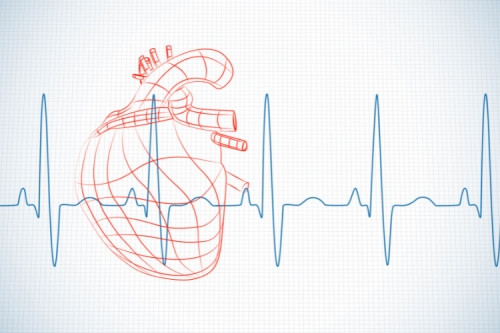
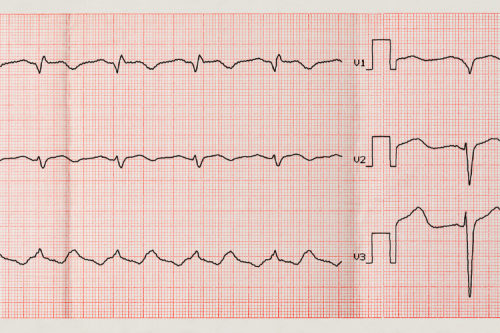

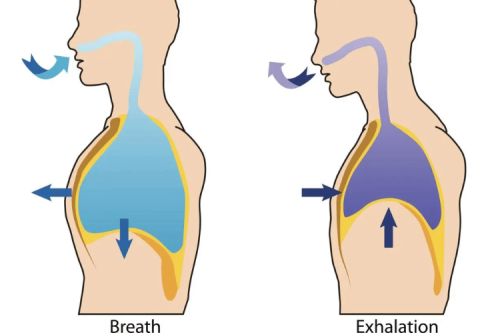
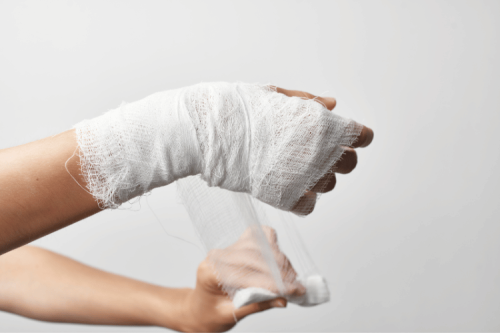
 Login with Google
Login with Google Login with Facebook
Login with Facebook